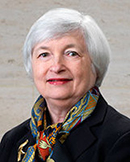

Research
BPEA | 2001 No. 2


2001, No. 2
IT IS DIFFICULT TO FIND A MORE dramatic episode of economic dislocation
in peacetime during the twentieth century than that associated with the
reunification of Germany. It is a sad irony of history that the plucky East
Germans who toppled the dictatorship of the proletariat in the bloodless
revolution of 1989 were rewarded with an economic bloodletting on such
a vast scale. From 1989 to 1992, GDP in the former German Democratic
Republic declined by roughly 30 percent, value added in industry by more
than 60 percent, and employment by 35 percent. During the same period,
unemployment rose from officially zero to more than 15 percent. That
figure, moreover, is based on registered unemployment only; joblessness rose to 33 percent if hidden unemployment (early retirement, involuntary
part-time work, makework, training schemes for the unemployed, and so
on) is included.